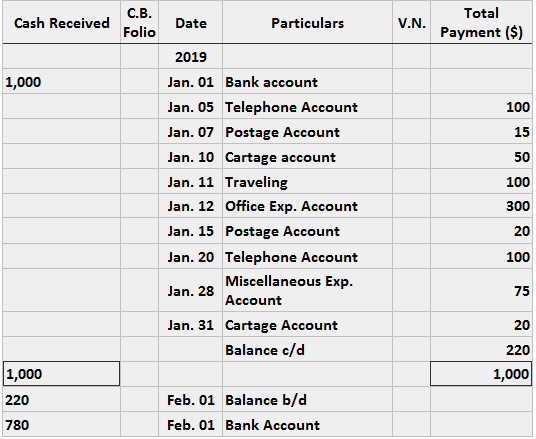Content

These rates have been fairly stable since last fall, after declining from their peaks in April 2020, when most schools and non-essential businesses were shuttered. Efforts to meet climate change targets are also depleting blue-collar jobs while creating opportunities in technical white-collar roles. And increasingly, white-collar workers are realizing the benefits of a union for the first time, as the new digital economy deprives workers of secure, permanent jobs with benefits. Organizing white-collar workers is crucial for unions as industry undergoes radical change due to digitalization and new technologies blur the traditional boundaries between blue-collar and white-collar jobs. Both terms came into common use in the 1920s, with novelist Upton Sinclair credited with coining the term “white-collar” to denote those workers who performed administrative or clerical work.
Allen had been working as a nanny and in retail while going to school full time. This shift to structured training also enables Aon to inject new diversity — in race, in gender and in life experience — into its business. The insurance giant has teamed up with other Chicago businesses and community colleges to bring on more than 1,000 employee-trainees. A growing number of employers are paying new employees while they train.
Blue collar workers are mostly skilled workers
As countries enforced stay-at-home policies, many people had to do their jobs remotely. A white-collar worker would find this task relatively easy – their job can generally be done remotely, as it is not site-specific. The term « white-collar worker » was coined in the 1930s by Upton Sinclair, an American writer who referenced the word in connection to clerical, administrative and managerial functions during the 1930s. A white-collar worker is a salaried professional, typically referring to general office workers and management. The way blue-collar workers are paid depends on the industry in which they work. Individuals who work in blue-collar industries are often paid on an hourly basis, such as mechanics. Some workers are paid by the number of pieces they complete in a day, which is typical for those who work in factory settings.
What’s the Difference Between Blue- and White-Collar Jobs?
Blue-collar jobs are those that involve a greater degree of physically-taxing or manual labor. Blue-collar jobs include farmers, mechanics, power plant operators, and electricians. White-collar jobs, on the other hand, typically work in office settings in clerical, administrative, and management roles. Blue-collar workers may be paid hourly wages while their white-collar counterparts typically command annual salaries. There are other perceived differences, as well, including educational backgrounds, appearances, and social classes. But these aren’t necessarily based on any factual basis.
(See Exhibit 1.) That means that employers must look for candidates willing to both accept jobs and show up every day. Add to all that, the reality of a record-low 3.8 percent unemployment rate, and manufacturers can begin to appreciate the daunting nature of their challenge.
What is a “Blue Collar” Worker?
The most obvious distinction between white collar vs. blue collar jobs is a white-collar worker works in an office setting with a desk and computer. Blue-collar workers can work in various non-office settings, such as warehouses, construction sites, workshops, production lines, outdoor areas, etc. The two terms gained traction after World War II. As the 20th century progressed, the terms became shorthand for different types of jobs. White collar workers were usually in offices, in administrative or management roles, and were paid a salary. The name comes from older times, too, when office workers usually wore white, collared shirts at work . White collar jobs examples include bank employees, people in finance jobs, or administrative assistants.
Gig economy is more than just blue collar workers – The Financial Express
Gig economy is more than just blue collar workers.
Posted: Sun, 19 Feb 2023 05:15:26 GMT [source]
Black https://personal-accounting.org/ – Manual laborers in industries in which workers generally become very dirty, such as mining or oil-drilling;[unreliable source? ] has also been used to describe workers in illegal professions.
Region & Community
Learning Discover courses and other experiences that bring out what’s best in you, the people around you and your entire organization. Psychiatric epidemiologists were among the first scientists to document that the poor suffer from a higher rate of mental disorders than the affluent. Mental health and, more precisely, psychiatric research have propelled many studies on economic inequality and mental disorders which reflect the humanistic concerns of psychiatrists. It’s all about getting noticed, proving yourself, a developing yourself for advancement. You will thrive on the fulfillment you get from taking on new responsibilities and building up others.
- Roles are typically professional or administrative office jobs.
- Most of their work is mental work performed at a desk with a computer and phone.
- These include white papers, government data, original reporting, and interviews with industry experts.
Hearst Newspapers participates in various affiliate marketing Blue Collar vs. White Collar, which means we may get paid commissions on editorially chosen products purchased through our links to retailer sites. The loan then gets disbursed into your U.S. bank account within a reasonable number of days (some lenders will be as quick as 2-3 business days).
Information is from sources deemed reliable on the date of publication, but Robinhood does not guarantee its accuracy. Well respected – Due to the professional nature of white-collar work, these workers are typically well respected by society. This is often due to the titles attached to white-collar work. Although an undergraduate degree is not a prerequisite, technical training or an apprenticeship are common entrance routes. Pink-collar is an outdated term that was used to describe sectors that were historically dominated by women, including nursing and secretarial work.